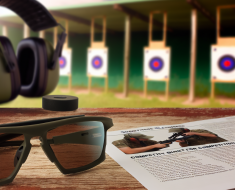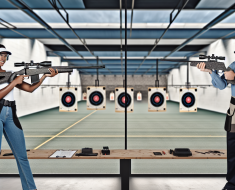Understanding Power Factor and Its Impact in Shooting
Shooting sports, whether competitive or recreational, involve a complex interplay of skill, equipment, and regulations. Among the many technical considerations that enthusiasts and professionals must understand is the concept of “power factor.” This often overlooked yet critical metric influences everything from ammunition choice to scoring in competitions. In this article, we will explore what power factor is, how it is calculated, its importance in various shooting disciplines, and its broader impact on safety and performance.
What Is Power Factor? Defining the Basics
The term “power factor” in shooting refers to a numerical value that represents the momentum of a bullet as it travels downrange. Unlike muzzle velocity alone, power factor accounts for both the weight of the projectile and its speed. It serves as an important standard for categorizing ammunition power and is widely used in practical shooting sports like IPSC (International Practical Shooting Confederation) and USPSA (United States Practical Shooting Association).
Mathematically, power factor (PF) is calculated using the formula:
- Power Factor = (Bullet Weight × Velocity) / 1000
where bullet weight is measured in grains and velocity in feet per second (fps). The division by 1000 is simply a scaling factor to bring the number into a more manageable range.
For example, if a bullet weighs 115 grains and travels at 1,200 fps:
- Power Factor = (115 × 1200) / 1000 = 138
This number can then be compared against minimum requirements set by governing bodies or used to classify ammunition into “major” or “minor” power categories.
The Role of Power Factor in Competitive Shooting
Power factor plays a pivotal role in competitive shooting disciplines such as IPSC, USPSA, IDPA (International Defensive Pistol Association), and Steel Challenge. It serves not only as a measurement of ballistic performance but also impacts scoring systems, equipment selection, and even shooter tactics.
Power Factor Categories: Major vs Minor
Most practical shooting competitions use power factor to categorize ammunition into two main classes:
- Major Power Factor: Ammunition with a higher PF generally above 165-170. This category awards shooters more points per hit on target but often comes with increased recoil.
- Minor Power Factor: Ammunition with a lower PF usually below the major threshold but above the minimum required (often around 125-130). Minor calibers have less recoil but score fewer points for hits.
This distinction influences shooters’ choices between calibers like .40 S&W or .45 ACP for major power versus 9mm for minor power. For instance, while .45 ACP rounds typically achieve major power factors due to their heavier bullets, many shooters prefer 9mm loads optimized for minor power because of lower recoil and faster follow-up shots.
Impact on Scoring and Strategy
The scoring system in matches rewards higher-caliber rounds with “major” status by assigning greater point values to hits on specific target zones. This encourages shooters to balance between accuracy and recoil management. For example:
- A “major” hit on a center mass might be worth 5 points.
- A “minor” hit on the same zone might be worth only 4 points.
This slight difference can accumulate over multiple stages and shots, potentially deciding match outcomes. Consequently, competitors must decide whether to prioritize raw stopping power or faster shot strings enabled by lower recoil loads.
How Power Factor Affects Ammunition Selection and Firearm Performance
The influence of power factor extends beyond scoring—it directly affects firearm behavior, shooter comfort, and reliability. Understanding these effects can help shooters optimize their loadouts for both training and competition.
Recoil Management
Ammunition with a higher power factor inherently produces more recoil energy due to greater momentum transfer when fired. This can result in:
- Increased muzzle rise: Making it harder to quickly realign sights after each shot.
- Louder noise levels: Which may affect shooter comfort over long sessions.
- Greater wear on firearm components: Leading to increased maintenance needs.
Shooters often find that managing recoil from major-power-factor loads requires additional practice or physical conditioning. Conversely, minor-power-factor ammunition facilitates faster follow-up shots but may sacrifice some scoring benefits.
Ammunition Reliability Considerations
The relationship between bullet weight, velocity, and firearm cycling is delicate. Loads that produce insufficient velocity or inconsistent pressure can lead to malfunctions such as failure-to-feed or stove-piping. Therefore, many competitors carefully handload ammunition to meet or exceed minimum power factor thresholds while maintaining reliable function.
Example: Reloading for Optimal Power Factor
A case study from an experienced USPSA competitor highlights this process:
- The shooter initially used factory-loaded .40 S&W rounds with a PF around 160—just shy of major classification.
- They began handloading lighter bullets pushed at slightly higher velocities to reach a PF of about 170 without excessive recoil.
<








